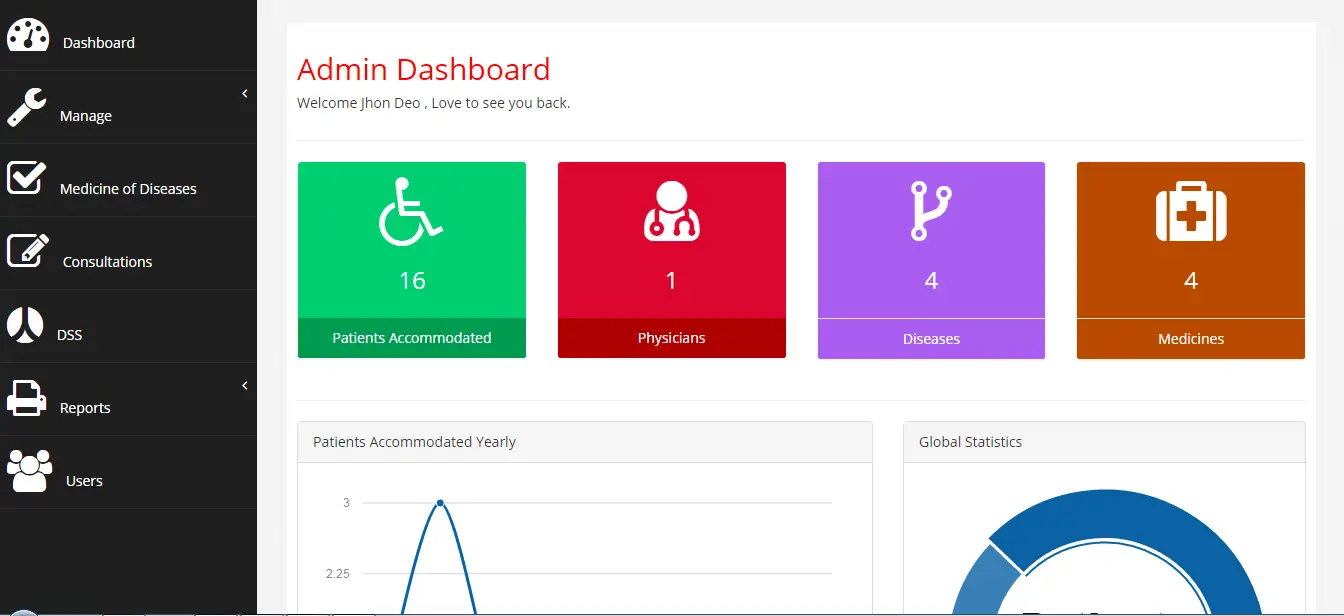High Demand Software Solutions in the Philippine Market
Introduction
Table of Contents
The Philippines is rapidly embracing digital transformation. As more businesses and organizations shift to digital platforms, the demand for efficient and localized software solutions continues to grow. From small enterprises to local government units, many are now recognizing the value of automating daily operations and improving services through technology.
In this fast-changing landscape, software systems play a critical role in addressing local business challenges. They help streamline processes, reduce manual work, improve customer experience, and increase overall productivity. Whether it’s a sari-sari store needing a point of sale system or a barangay office needing an organized resident database, the right software can make a big impact.
This blog post explores the most profitable and in-demand software solutions in the Philippine market. If you’re a developer, IT student, or entrepreneur looking to build a useful system, this list can help you discover ideas with high potential and real-world value.

Why Demand for Localized Software is Rising
The demand for localized software solutions in the Philippines is steadily increasing. One of the main reasons is the growing digital adoption among small and medium enterprises (SMEs) and local government units (LGUs). Many of these organizations are now investing in technology to streamline operations, improve efficiency, and serve customers better. From inventory systems to resident databases, software is becoming a daily necessity.
Another strong driver is the government’s push for automation and e-governance. Agencies are being encouraged to go digital, making room for systems that handle permits, documents, health records, and other essential services. This creates a big opportunity for developers to offer tailored systems that meet public service needs.
Filipino consumers are also becoming more tech-savvy. They prefer doing things online—shopping, booking services, making payments, or communicating with businesses. Because of this, companies are expected to offer digital solutions that match this behavior. Mobile-first platforms, online payment integration, and instant communication features are no longer optional—they’re expected.
Lastly, many foreign software solutions fail to address the specific needs of local users. These tools often lack support for local payment gateways like GCash or Maya, use unfamiliar workflows, or are simply too expensive for small businesses. This gap opens up an opportunity for local developers to build systems that are simple, affordable, and perfectly suited for the Philippine market.
Top High-Demand Software Solutions in the Philippines
As digital technology continues to reshape how Filipinos live and work, certain software solutions have emerged as essential tools in both business and public service. Here are the top high-demand systems in the country and why they matter.
- Point of Sale (POS) and Inventory Systems
- Target Users: This software is crucial for retail stores, sari-sari stores (small neighborhood stores), groceries, and any business handling physical product sales.
- Common Features: Core functionalities include sales tracking, stock management, inventory alerts, detailed sales reporting, customer transaction history, and often, integration with barcode scanners and receipt printers.
- Why It’s In Demand: The automation of small business processes is a major driver. POS systems streamline transactions, reduce manual errors, and provide real-time insights into sales and inventory. For sari-sari stores and small retailers, this means improved efficiency and better control over their operations. As more businesses seek to compete in a digitally driven market, the adoption of POS systems is set to increase.
- Barangay and LGU Management Systems
- Target Users: Barangays (the smallest administrative divisions in the Philippines), Sangguniang Kabataan (SK or youth councils), and municipalities.
- Features: These systems facilitate resident profiling, online certificate requests (e.g., barangay clearance), blotter reports (incident logs), community announcements, and online payment for local fees.
- Opportunity: The Philippine government’s push for digital governance initiatives provides substantial funding and support for LGUs to adopt these systems. This creates a significant opportunity for software developers to create solutions that meet the specific needs of local government units.
- School and Student Management Systems
- Target Users: Private schools, review centers, and other educational institutions.
- Features: These systems manage enrollment, grading, attendance tracking, payment processing, student records, and communication between teachers, students, and parents.
- Trend: The integration of online learning platforms and e-report cards is a growing trend, driven by the need for remote learning solutions and improved communication. These systems are essential for efficient school administration and enhanced student engagement.
- Online Booking and Reservation Systems
- Target Users: Clinics, salons, resorts, restaurants, and other service-based businesses.
- Features: Real-time scheduling, automated reminders, payment integration, customer management, and online availability updates.
- Benefit: These systems reduce no-shows by sending reminders and provide a convenient way for customers to book appointments. They also support social distancing policies by managing customer flow and reducing wait times.
- Laundry and Water Refilling Management Systems
- Target Users: Local service businesses, particularly laundry shops and water refilling stations.
- Features: Order tracking, SMS updates, customer database management, delivery scheduling, and payment processing.
- Growth: The rise of home service businesses in urban areas has increased the demand for these systems. They streamline operations, improve customer communication, and enhance service delivery.
- Healthcare and Clinic Information Systems
- Target Users: Clinics, dental offices, private practices, and other healthcare providers.
- Features: Electronic patient records (EHR), appointment scheduling, e-prescriptions, billing, and inventory management.
- Demand Driver: The increasing adoption of telemedicine has accelerated the demand for these systems. They facilitate remote consultations, improve patient data management, and enhance overall healthcare delivery.
- Real Estate and Rental Management Platforms
- Target Users: Landlords, boarding house owners, real estate agents, and property managers.
- Features: Billing and payment tracking, maintenance request management, contract renewal reminders, tenant communication, and property listing management.
- Gap: Many landlords and property owners still rely on manual systems or spreadsheets, creating a significant opportunity for software developers to provide efficient and user-friendly solutions.
- E-Commerce and Delivery Platforms for Niche Markets
- Target Users: Local sellers, cooperatives, direct farmers, and other niche market participants.
- Features: Online product catalogs, order management, local delivery integration, payment processing, and customer feedback systems.
- Popularity: The strong Facebook Marketplace culture and the increasing popularity of local shopping apps drive the demand for these platforms. They enable local sellers to reach a wider audience and provide convenient shopping experiences for consumers.
Key Features That Make These Systems Successful
What makes software truly valuable in the Philippine market? It’s not just about flashy design or advanced features—it’s about how well the system fits local needs. Here are the top features that drive the success of high-demand software solutions in the country:
Localization
Filipino users prefer tools that speak their language—literally and culturally. Successful systems often offer Filipino language support, flexible pricing tailored for local budgets, and workflows that match how small businesses and public offices operate. Whether it’s handling barangay certificates or tracking sari-sari store sales, localized workflows make adoption easier and faster.
SMS and Mobile-First Compatibility
Most Filipinos access the internet through their phones. This is why mobile-first systems—designed to work smoothly on smartphones—perform better. SMS integration is another must-have, especially for sending updates, confirmations, or reminders to users who may not always have internet access. This combination supports both accessibility and convenience.
Integration with GCash, Maya, and QR Ph
Filipino consumers love cashless transactions. Systems that allow payments through GCash, Maya, or QR Ph automatically gain an edge. These integrations simplify transactions, increase trust, and help businesses get paid faster. Whether you’re running a laundry shop or an online store, local payment gateways are essential for success.
Affordable Pricing and Offline Support
High costs are a barrier for many small businesses and LGUs. That’s why affordable, one-time payment options or budget-friendly subscription plans are highly attractive. In addition, offline support—where the system can still run without internet—is crucial, especially in areas with unstable connectivity. It ensures business operations continue without interruption.
Monetization and Development Tips
Building high-demand software in the Philippines is not only about solving problems—it’s also about making it sustainable and profitable. If you’re a developer or aspiring tech entrepreneur, here are practical tips to help you turn your system into a thriving business.
Use Subscription Models or Tiered Pricing:
- Subscription-based models provide a predictable revenue stream and are often more appealing to SMEs with budget constraints.
- Tiered pricing allows businesses to choose plans that match their specific needs and scale up as they grow. Offer basic, standard, and premium packages to cater to different customer segments.
- Consider offering free trials or freemium versions to attract new users and demonstrate the value of your software.
Offer Setup, Training, and Maintenance Packages:
- Many local businesses, especially smaller ones, may require assistance with software setup and implementation. Offering comprehensive setup packages can be a significant selling point.
- Provide thorough training to ensure users can effectively utilize the software’s features. This can include on-site training, online tutorials, and user manuals in local languages.
- Maintenance packages, including regular updates and technical support, are crucial for building long-term customer relationships and ensuring customer satisfaction.
Use Open-Source Stacks Like PHP, MySQL, Laravel:
- Open-source technologies like PHP, MySQL, and Laravel can significantly reduce development costs and provide access to a large community of developers.
- Laravel, in particular, offers a robust and efficient framework for building web applications, making it ideal for developing e-commerce platforms, management systems, and other web-based solutions.
- Using these technologies can also help with the availability of local developers, which will reduce the cost of maintenance and development over time.
Build MVPs and Validate with Small Businesses:
- Start with a Minimum Viable Product (MVP) to validate your software’s core features and gather feedback from potential users.
- Partner with small businesses to test your MVP in real-world scenarios. This allows you to identify any usability issues, refine your features, and ensure your software meets the specific needs of your target market.
- This validation process is critical in the Philippines, where word-of-mouth and community trust are very important.
Focus on Mobile-First Development:
- As previously stated, the Philippines is a mobile first country. Develop with that in mind.
Provide Excellent Customer Service:
- Filipino customers greatly value good customer service. Provide quick and efficient support.
- Offer multiple channels of support, such as phone, email, and social media.
Conclusion
The demand for smart, practical, and localized software solutions in the Philippines is growing rapidly. From POS systems for sari-sari stores to barangay management tools, school portals, laundry and clinic systems, and real estate platforms, each of these solutions addresses a specific local need—and presents a real opportunity for developers and tech entrepreneurs.
If you’re a developer, now is the perfect time to build for your community. Don’t wait for big funding or complicated ideas. Start small, solve real problems, and focus on systems that matter to Filipinos. Use tools you know, validate your idea with local users, and grow from there.
You may visit our Facebook page for more information, inquiries, and comments. Please subscribe also to our YouTube Channel to receive free capstone projects resources and computer programming tutorials.
Hire our team to do the project.


